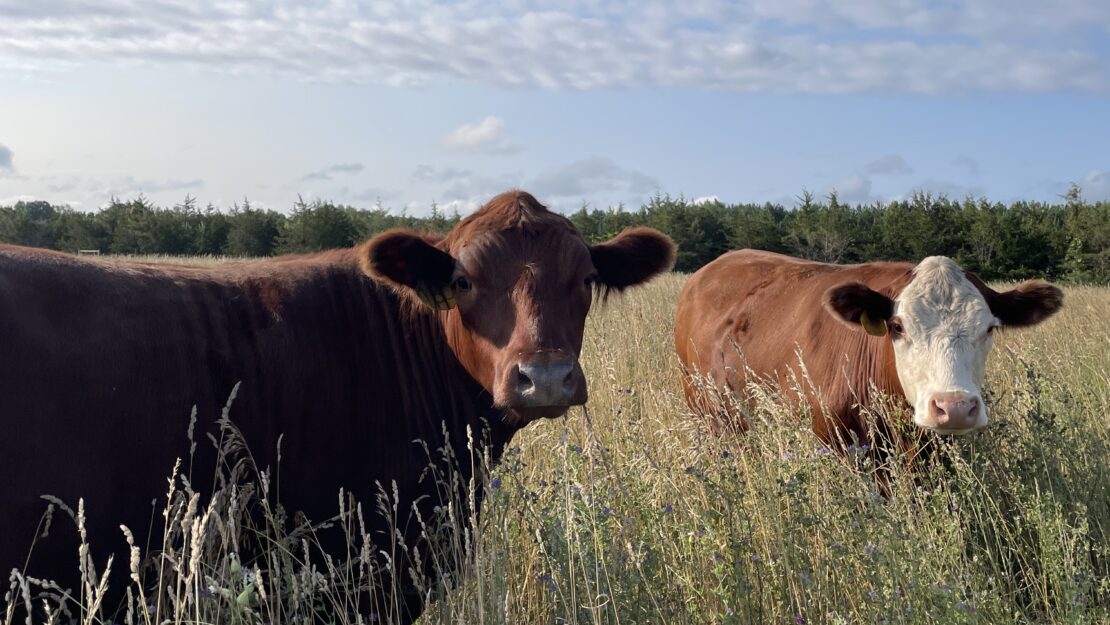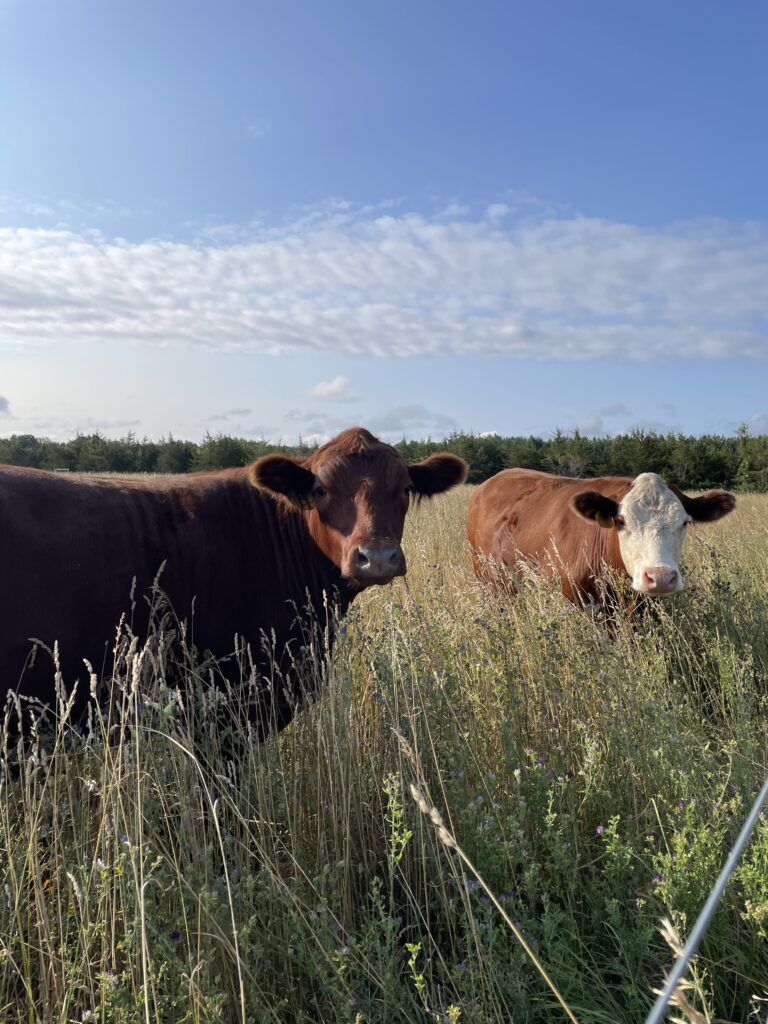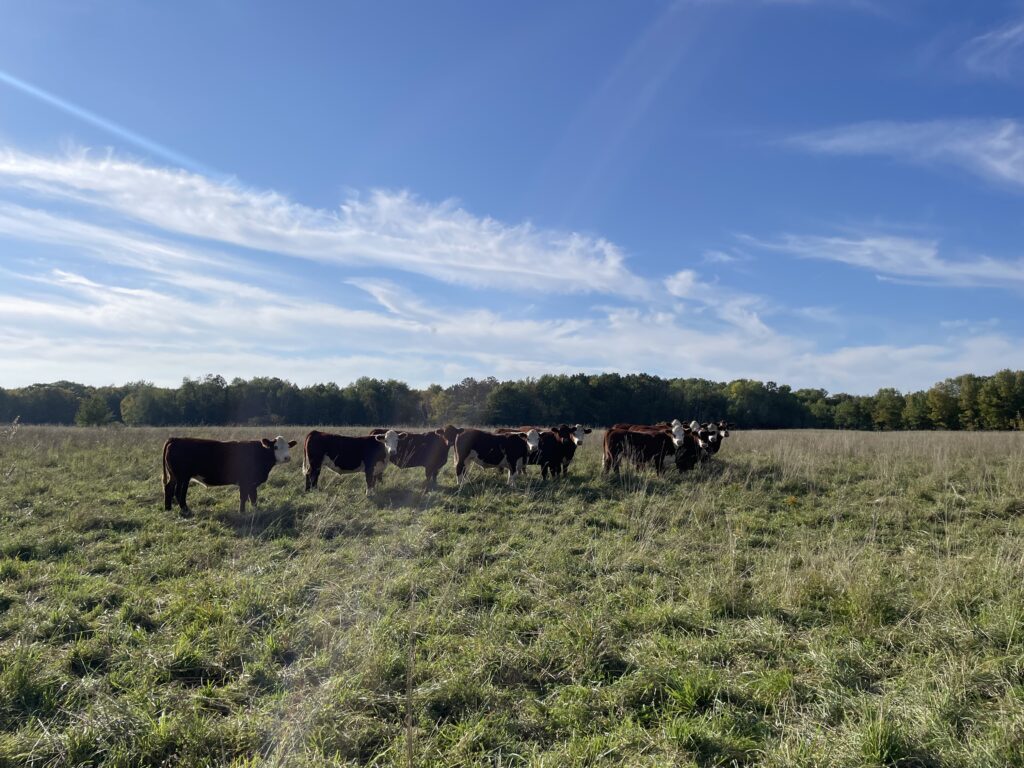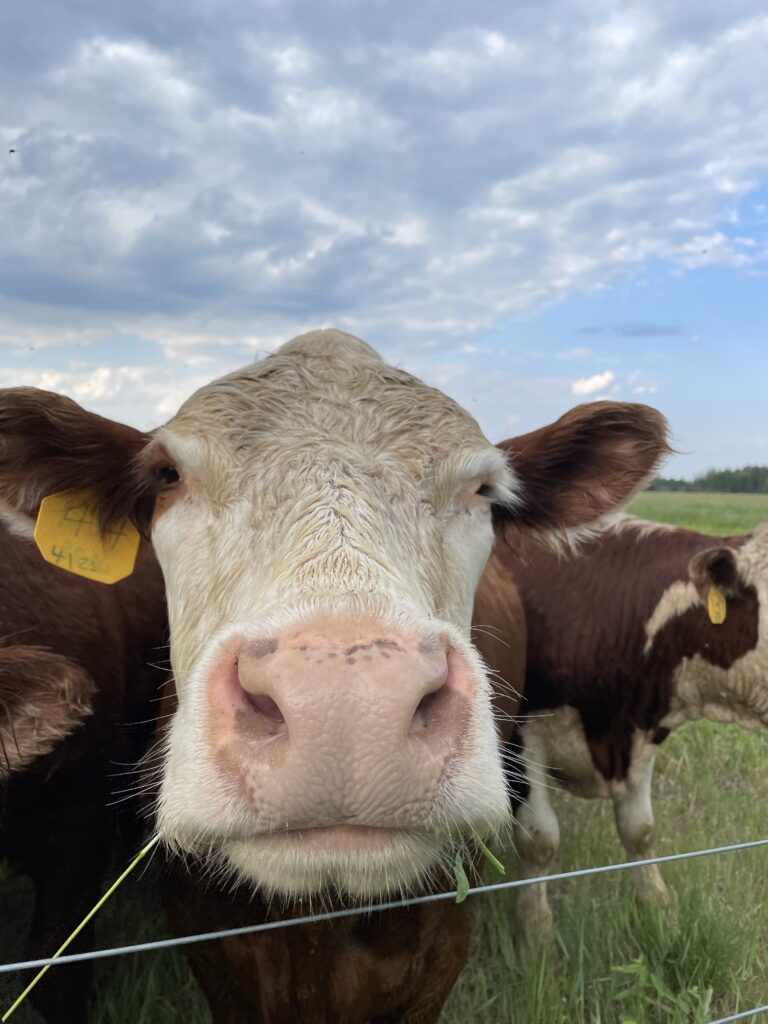Rotational Grazing at Trapp Farm

By Kaden Mettel, Communications Outreach Specialist Individual Placement / AmeriCorps Member placed at Osprey Wilds Environmental Learning Center
As our climate continues to change under the influence of human activity, methods of sequestering carbon become increasingly important. The agriculture sector is one of the biggest contributors to climate change, but it also has the potential to sequester more carbon through regenerative practices. Regenerative agriculture works to improve soil health, protect water resources, and sequester carbon while prioritizing biodiversity and community.

A key element of the larger regenerative agriculture picture is the process of rotational grazing livestock. Rotational grazing is an alternative grazing system compared to the widely used continuous grazing where livestock has access to a single pasture all season. When livestock is rotationally grazed, they are moved between smaller paddocks within a larger pasture. Time spent in each smaller paddock is short and the forage plants are grazed while the remainder of the pasture “rests.” Livestock are then moved from paddock to paddock in order to give each area of pasture time to regrow after grazing. This allows for controlled land use and more evenly distributed grazing and manure spread.

At Trapp Farm, we have a herd of twelve beef cows that are a mix of Red Angus and Hereford breeds. These cows rotationally graze within our 42 acres of pasture. As they move between paddocks, the grass and forage they were feeding on previously is allowed to regrow more quickly than if they had access to all 42 acres all the time. They are also exposed to a variety of forage plants in each rotation. Manure, and all of its benefits to the soil, bugs, and birds, moves with the cows as they change paddocks. The process of rotational grazing is less intense on the forage and soil over time and allows for plants to strengthen their root systems. Deeper root systems mean more nutrients in the soil and better resistance to erosion.

These twelve cows have been out on pasture all summer and will be heading to the butcher at the end of the fall. Part of the beef goes to Osprey Wilds ELC and Hinckley Schools who feed local communities that come to their cafeterias, while the rest belong to a locally contracted farmer in Sandstone. The cows feed a community within ten miles of where they spent their time grazing. Not only do they live a happier life with exposure to a variety of forage, but after their life they also give back to the local plant and human community. Rotational grazing benefits the livestock, land, and community.